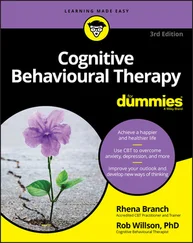Hannie van Genderen - Schema Therapy for Borderline Personality Disorder
Здесь есть возможность читать онлайн «Hannie van Genderen - Schema Therapy for Borderline Personality Disorder» — ознакомительный отрывок электронной книги совершенно бесплатно, а после прочтения отрывка купить полную версию. В некоторых случаях можно слушать аудио, скачать через торрент в формате fb2 и присутствует краткое содержание. Жанр: unrecognised, на английском языке. Описание произведения, (предисловие) а так же отзывы посетителей доступны на портале библиотеки ЛибКат.
- Название:Schema Therapy for Borderline Personality Disorder
- Автор:
- Жанр:
- Год:неизвестен
- ISBN:нет данных
- Рейтинг книги:3 / 5. Голосов: 1
-
Избранное:Добавить в избранное
- Отзывы:
-
Ваша оценка:
- 60
- 1
- 2
- 3
- 4
- 5
Schema Therapy for Borderline Personality Disorder: краткое содержание, описание и аннотация
Предлагаем к чтению аннотацию, описание, краткое содержание или предисловие (зависит от того, что написал сам автор книги «Schema Therapy for Borderline Personality Disorder»). Если вы не нашли необходимую информацию о книге — напишите в комментариях, мы постараемся отыскать её.
Shema Therapy for Borderline Personality Disorder
Schema Therapy for Borderline Personality Disorder
Schema Therapy for Borderline Personality Disorder — читать онлайн ознакомительный отрывок
Ниже представлен текст книги, разбитый по страницам. Система сохранения места последней прочитанной страницы, позволяет с удобством читать онлайн бесплатно книгу «Schema Therapy for Borderline Personality Disorder», без необходимости каждый раз заново искать на чём Вы остановились. Поставьте закладку, и сможете в любой момент перейти на страницу, на которой закончили чтение.
Интервал:
Закладка:
The purpose in therapy is to intensify activities to bring up Happy Nora. Most BPD patients have no idea how to trigger their Happy Child mode, because they never were allowed to make fun. In the beginning of therapy, it is difficult to feel good and relaxed because of the detached protector and the punitive parent. When she is in the detached protector, the patient doesn't feel anything at all. If you suppress your bad feelings, you also suppress all good feelings. It is important to explain this to your patients in order to ask the detached protector to diminish. If the punitive parent is activated, making fun or playing is seen as ridiculous and silly or even seen as a proof of being worthless and stupid. If this happens the therapist should fight the punitive parent first in order to make space for the happy child.
How to recognize the happy child during a session?
The patient is laughing
The patient is enthusiastically telling about things that went well
The patient tells about doing nice things with others
The patient looks relaxed or happy
The patient feels attached to the therapist
Summary
There is a saying that necessity is the mother of invention. ST was developed out of necessity. It was necessary to expand upon cognitive techniques, as these therapies were not helpful enough in treating personality problems. By adjusting techniques from other therapy schools and fitting them into a cognitive framework, a new form of integrated therapy was created: “Schema Therapy.”
Research results prove that patients can recover from BPD with ST or have clinically relevant improvement. ST not only leads to symptomatic change, many patients feel that their personality changed, that they are better capable of dealing with intimate as well as professional relationships, and that their quality of life and their level of happiness improved considerably. Important is also that this treatment is cost effective. Moreover, ST is highly acceptable for most patients, and patients feel ST is comprehensive, addressing what they are looking for in treatment.
The schema mode model attempts to give insight as to why patients with BPD have such strong mood changes and erratic behaviors. We will now continue with a description of the different phases of therapy ( Chapter 3), and the most important techniques ( Chapters 5– 8). We will then return to schema modes in Chapter 9, to explain how different techniques can be applied for the different modes in the different phases of treatment.
3 Treatment
The process of change in ST for BPD takes place along three distinct channels: feeling, thinking, and doing. These channels correspond to the three levels of knowledge representation that are present in the schemas: explicit knowledge (thinking), implicit “felt” knowledge (including emotional representations or feeling) and operational representations (doing).
In addition to these three channels, we can also distinguish four different foci, which can be addressed by these channels. These foci are life outside of therapy, experiences in therapy, past experiences, and future life. The channels and foci are presented in a matrix in Table 3.1so that it is clear which relevant therapeutic techniques can be best applied for the different foci.
Whatever topic the patient focuses on and whatever pathway is tried, these techniques can only be successful once a certain level of trust and attachment to the therapist is formed (see “within therapy” in Table 3.1). Because of the importance of the relationship between patient and therapist, we will address the specifics of the therapeutic relationship in ST in Chapter 4immediately after discussing treatment in this chapter. After the therapeutic relationship is addressed, we will move on to the techniques. First, we will discuss the change of implicit knowledge in Chapter 5(Experiential Techniques), then thinking or explicit knowledge in Chapter 6(Cognitive Techniques), and finally “doing” or changing operational representation in Chapter 7(Behavioral Techniques). All of the subjects summarized in the matrix ( Table 3.1) can be found in the following chapters. However, first we will examine the phases involved in the course of treating BPD with ST.
Table 3.1 Therapeutic techniques
| Focus | Channel | ||
|---|---|---|---|
| Feeling | Thinking | Doing | |
| Outside therapy | * Role‐play present situations* Imagining present situations* Practice feeling emotions* Exposure to showing emotions | * Socratic questioning* Formulating new healthy schemas and strengthening the Healthy Adult Mode* Schema dialogue* Flashcards* Positive logbook* Self‐monitoring Circle | * Behavioral experiments* Role playing skills* Problem solving* Trying out new behavior |
| Within therapy | * Limited reparenting* Empathic confrontation* Setting limits* Role switching therapist/patient | * Recognizing patient's schemas and modes in the therapeutic relationship* Pro's and con's Coping Modes* Challenging ideas about therapist* Self‐disclosure | * Behavioral experiments* Strengthening functional behavior* Training skills related to the therapeutic relationship* Modeling by therapist |
| Past | * Imagery rescripting* Role‐play past* Two‐or‐more‐ chair technique* Writing letters | * Reinterpretation of past events and integration into new schemas* Historical test | * Testing of new behaviors on key individuals from the past |
| Future | * Imagery or role‐play about situations in the near future* Two chair technique: dialogue between dysfunctional (old) modes and the Healthy Adult | * Developing new goals for the future, based on own needs, interests and talents* Anticipate on activation of schemas in difficult situations* Choose which situations, activities and people to engage in, and which not | * Testing of new behaviors on new contacts* Making new friends* Explore and try out new activities (e.g., education or work) |
Most of the techniques are also demonstrated in a recent audiovisual production Schema Therapy Step by Step , van der Wijngaart and van Genderen (2018). The purpose of this production is to familiarize therapists with all aspects of ST. When applicable, we will refer to relevant scenes.
Structure of Treatment
Treatment begins with a comprehensive inventory of the problems as the patient experiences them. This is done in connection with a thorough explanation of the schema mode model. Also included in these beginning sessions is a discussion of practical matters such as the frequency of sessions (once or twice a week) and the expected duration of the therapy (one‐and‐a‐half years or longer if necessary).
If the patient is not able to stay in therapy for such a long period for practical reasons (for instant she is going to move to another city far away) or doesn't want to participate in such a long therapy, it is advisable not to start with the therapy and refer the patient to another kind of treatment. The same applies to the therapist. If he is unable to work with the patient for a longer period, he should not start a ST with a patient with a BPD. If he stops therapy in the middle of the treatment, there is a big risk that the patient will feel abandoned and betrayed again and can have a serious relapse. When the therapist has to end therapy too early unexpectedly, it is very important that he takes enough time to discuss this with his patient and endures all the reactions of the patient without defending himself. He has to keep in mind that extreme reactions come from the modes and not from the healthy adult. So, he tries to adapt his reaction to the mode that comes to the fore. Of course, the therapist also does his utmost best to find another schema therapist and takes care of a good transfer, for instant by having at least one or two joint sessions.
Читать дальшеИнтервал:
Закладка:
Похожие книги на «Schema Therapy for Borderline Personality Disorder»
Представляем Вашему вниманию похожие книги на «Schema Therapy for Borderline Personality Disorder» списком для выбора. Мы отобрали схожую по названию и смыслу литературу в надежде предоставить читателям больше вариантов отыскать новые, интересные, ещё непрочитанные произведения.
Обсуждение, отзывы о книге «Schema Therapy for Borderline Personality Disorder» и просто собственные мнения читателей. Оставьте ваши комментарии, напишите, что Вы думаете о произведении, его смысле или главных героях. Укажите что конкретно понравилось, а что нет, и почему Вы так считаете.












